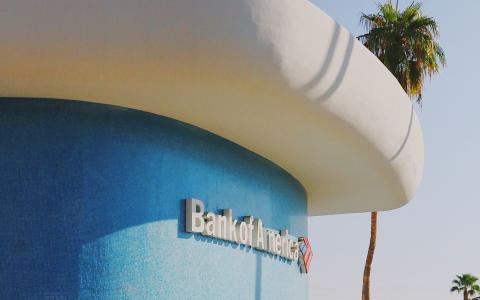
Bank of America strategists are warning of market conditions reminiscent of past financial bubbles, urging advisors to consider potential risks associated with the current AI-driven rally. As enthusiasm for growth stocks continues, parallels are emerging to the "Nifty Fifty" boom of the 1960s and the dot-com era of the late 1990s. While near-term gains remain possible, historical precedents suggest a more challenging period could be ahead.
One key factor is market concentration. The market capitalization of U.S. stocks relative to the rest of the world stands at an extreme 3.3 standard deviations above the historical norm. Within the S&P 500, the top five stocks now comprise 26.4% of the index, while "new economy" stocks represent more than half of the index’s total value—a record high.
A major driver of this concentration is passive investing. With passive funds now commanding a 54% market share, indiscriminate capital allocation has inflated valuations while potentially amplifying downside risks. Jared Woodard, investment and ETF strategist at Bank of America, cautions that such a dynamic could set the stage for a significant downturn.
"Passive disregard for valuations and fundamentals creates enormous upside during periods of innovation," Woodard writes. "But it also introduces considerable risk in a downturn."
Looking at historical patterns, Woodard warns that an extended period of weak returns could follow, similar to what occurred after the "Nifty Fifty" and dot-com collapses. Momentum reversals have already grown more pronounced, and a 50%+ drawdown in "new economy" stocks—smaller than the dot-com crash—could push the overall S&P 500 down by 40%.
“If the eight sectors outside of the leading ‘new economy’ names were to rally 10% while the top mega-cap tech stocks declined 10%, the S&P 500 would merely remain flat,” Woodard notes. "This is not a healthy or diversified market."
Woodard’s cautionary outlook aligns with other major Wall Street analysts. Morgan Stanley’s Mike Wilson has projected a "flat-ish" decade for the S&P 500, while Goldman Sachs’ David Kostin has forecasted average annual returns of just 3% over the next 10 years.
Strategies for Advisors to Mitigate Risk
To navigate potential market turbulence, Bank of America strategists suggest a disciplined approach:
Monitor Market Breadth: Watch for when the S&P 500 equal-weight index begins outperforming the cap-weighted index. Historically, the equal-weighted S&P 500 has outperformed its cap-weighted counterpart by one percentage point per year since 1958. However, there have been five distinct periods where the cap-weighted index led, typically lasting 16 quarters. Currently, the cap-weighted index is considered 2.5 standard deviations overbought relative to historical trends.
Reduce Exposure to Overconcentrated Holdings: Investors should consider diversifying away from the Magnificent Seven stocks. Instead, focus on quality equities with strong fundamentals. Bank of America highlights several ETFs that provide exposure to quality stocks, including the Pacer US Large Cap Cash Cows Growth Leaders ETF (COWG), the iShares MSCI USA Quality GARP ETF (GARP), and the WisdomTree US Quality Growth Fund (QGRW).
Emphasize Portfolio Diversification: Advisors should implement position limits to mitigate risk. Bank of America’s Derek Harris, head of global wealth and investment management portfolio strategy, advises keeping individual holdings under a 15% weighting to promote diversification and resilience.
As advisors assess market risks, the emphasis should be on maintaining a balanced approach—leveraging active investment strategies, reducing exposure to overconcentrated positions, and ensuring portfolios remain diversified to weather potential volatility ahead.



